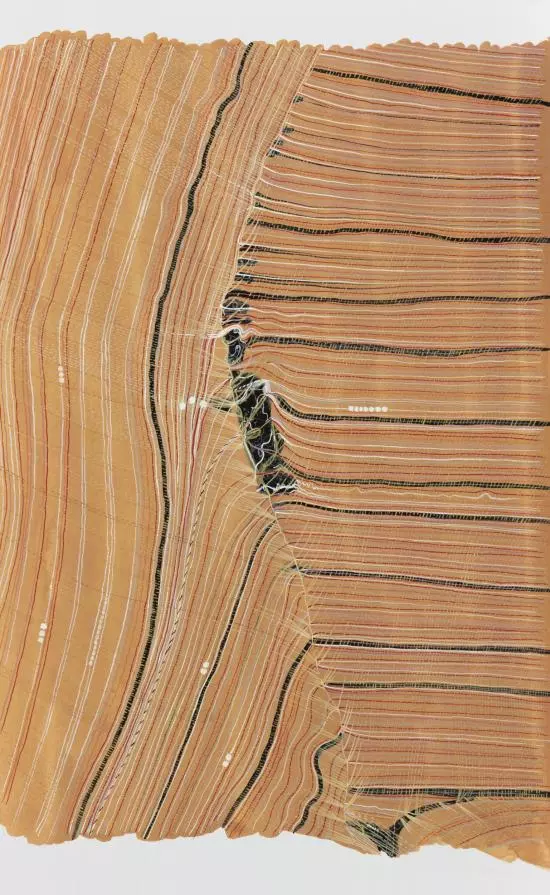
The stitch is lost, unless the thread be knotted - I
Through my work I am trying to create a space where these gendered issues are explored. The damage that has been done to my people is often explored on the mass scale yet much of the impact of these social forces is very intimate.
The use of threads, fabrics and needles symbolise these intimate wounds and tears as well as the upheavals to various relationships throughout my life. The personal, familial and commu-nity conflicts are shown through the use of unraveling threads, different types of knots, and needles. The word ‘thread’ in itself has so many meanings in so many different contexts. A ‘thread’ is defined as a fine cord made of two or more filaments twisted together. In a practical context, it is something that can be used to mend fabrics and used for sewing, but in a lateral context, it is a thread of human affairs and relationships.
Historically, the Hazara women were expert weavers of rugs, especially kilims. Weaving rugs was a main source of income for the Hazara women. As a girl, it is expected traditionally to master the techniques of sewing, knitting, stitching and weaving. After mastering all these techniques, one is qualified in becoming a ‘whole’ woman, who knows all the tricks of the trade. Fearing that these skills would tie me to a restricted womanhood I resisted learning the traditional Hazara crafts as a child. Instead, I spent all of my time playing with paints and colours. Even though I learnt the techniques through on-going practice, as it was a require-ment, I stopped doing it once I got older. Instead I fully focused solely on drawing and paint-ing.
I want to redefine the traditional techniques of weaving and embroidery through my artwork. I have incorporated cultural metaphors from my everyday life like embroidery techniques, needles, knots and various fabrics to depict the fragility of relationships on a micro level. I choose to subvert these traditional crafts through using traditional materials in an unortho-dox way. The simplicity and fragility in my paintings shows the fragility of relationships, and how a mere thread binds everything. Relationships, like threads, can be so sensitive that they break easily, and on the other hand, it can be so strong they can hold everything together.
 Share / Save
Share / Save





















Comments 4
Strong and slight at the same time. Thank you for sharing these master pieces, and thanks to make this world better , such as you say:
"...While the new experience is being woven into the design, the old rip is simultaneously being repaired."
congratulations
Say something